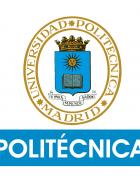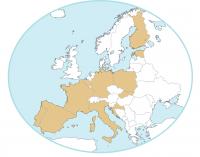
UPM - School of Mining and Energy Engineering
Technical University of Madrid
Universidad Politécnica de Madrid – UPM (Technical University of Madrid) will contribute to the
project with the study and description of the History of mining and industry all along the Spanish
geography, including:
- First applications of minerals during the Stone Age, Neolithic mines in the center of the Iberian Peninsula and first metallic mines.
- Mining developments of the Tartessian in the area of Huelva
- Roman mining operations in the whole area of the Iberian Pyrite Belt and in the North of the Iberian Peninsula (mainly in Las Medulas in León and Asturias and Galicia).
- History of the Mercury operations in the Almedén mining district.
- Iron mining from the Roman age in the area of Cuenca/Teruel, copper mining in the area of Rio Tinto
- The decline of Mining activity during the Arab occupation and the renaissance of this activity during the Middle Age.
- The modernization and developments produced in the XVI century thanks to development of the first School of engineering in mines and the introduction of technical advances as the use of large pumping machines moved by hydraulic energy for drainage, the fortification with masonry of the galleries, the use of gunpowder for the ore blowing, etc., which can give an idea of the change and the advance that these supposed for the work in the mines and in Society.
- The Industrial Revolution of the 18th century brought a substantial change to mining exploitation and the opening of a wide range of mines for many materials: development of the iron and steel metallurgy, the coal mining (Asturias, Leon, Teruel, Cordoba, Sevilla, etc.), lead mining (Cartagena, Linares, etc), manganese (Burgos).
- The mine diversification produced in the 20th century, with the development a diversified metallic mining sector together with the expansion of the mining activities of industrial minerals, natural stone, cement, and aggregates production together with the industrial development associated with these products.
This study and description will be complemented with the relationship with the mining museums
existing in Spain that develop exhibitions and educational activities related to the different types of mines and periods.

